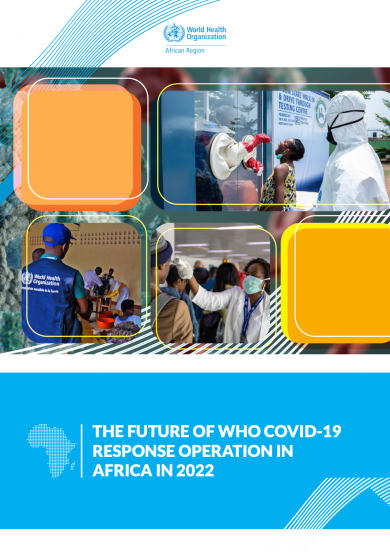
The future of WHO Covid-19 response operations in Africa in 2022
The African Region has been experiencing unprecedented health challenges due to the Coronavirus disease 2019 (COVID-19) pandemic, which have compounded the already difficult task the Region was facing in moving towards universal health coverage (UHC) attainment. Twenty months into the pandemic since the detection of the first case of COVID-19 in the WHO African Region on 25 February 2020 in Algeria, all 47 African Region countries have reported COVID-19 confirmed cases. So far, the pandemic (in the WHO African Region) has evolved in three main waves, with the latest one still ongoing in eight countries1, which are currently experiencing a resurgence as of 19 November 2021. The continuing third wave has been characterized by: (i) difficulty in maintaining adherence to preventive measures resulting in clusters of cases in families, schools, workplaces and close settings; (ii) the circulation of new variants of concern, especially the Delta variant currently detected in all the countries in the WHO African Region and the Omicron variant detected in 40% of countries in the WHO African Region (19 out of 47)2; and (iii) low testing capacities coupled with inappropriate testing strategies leading to under-detection of cases, particularly those with no or mild symptoms. Equally, we have seen variations in the estimations of cases and deaths across the continent. The WorldHealth Organization’s (WHO) assessment showed that only 14.2% – or one in seven – COVID-19 infections are being detected in Africa. It is difficult to compare the number of cases and deaths experienced by the different countries for several reasons including the following: it is more or less likely to detect and report all COVID-19 cases and deaths; use of different case definitions and testing strategies or counting cases differently (for example, mild cases not being tested or counted); handling of time lags differently; differing quality of care or interventions being introduced at different stages of the illness; and the variation of patient profiles (for example, their age, sex, ethnicity and underlying comorbidities) between countries.


